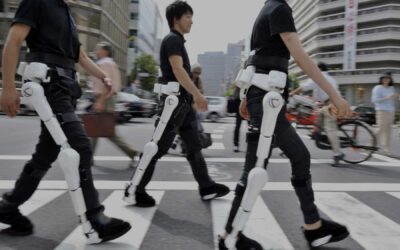Paralysis is caused by an injury to the nervous system that can happen during a neurological event such as a stroke or spinal cord injury. When the nervous system becomes damaged, signals from the brain cannot appropriately activate muscles required for movement.
Paralysis involves a loss of motor function in the body due to neurological injury. It can affect any number of limbs and manifests differently for everyone. As a result, paralysis treatment works differently for everyone because every neurological injury is unique. Stroke and spinal cord injury are the two leading causes of paralysis…
Paralysis Treatment

Paralysis treatments can help patients improve their chances of regaining mobility in their affected limbs. Although paralysis impacts many stroke survivors, several treatments are available to help improve strength and function.
Neuroplasticity is the mechanism that the nervous system uses to create and rewire neural pathways. Through neuroplasticity, motor functions affected by neurological damage can be rewired to unaffected brain and spinal cord regions.
Here are the various paralysis treatment interventions that can help improve your mobility and quality of life:
- Wearable robots are helping people with paralysis walk again:
Over the last few years, there have been major developments in this field, giving hope to people with spinal cord injuries, neurological disorders, and strokes. The use of these devices during rehab is growing and their benefits becoming more widely recognised.

The robots, such as Cybderyne’s Hybrid Assisted Limb (HAL), can help even the most sedentary of all patients and improve their quality of life.
- Physical Therapy:
Physical therapy focuses on improving your mobility through targeted exercise. A physical therapist will help guide you through exercises to make sure you’re performing them correctly and safely.
Neuroplasticity is triggered by experience. Consistent and repetitive stimulation of the brain and spinal cord helps reinforce the demand for those functions and promotes neuroplasticity. The more you practise, the greater your chances of recovery.
- Occupational Therapy
Occupational therapy helps one develop the skills necessary to perform self-care tasks, return to school or work, and minimise the risk of secondary complications. It involves practising activities of daily living such as grooming or eating to provide practical, real-world training.
- Speech Therapy
Speech therapy helps individuals with facial paralysis strengthen their oral motor muscles. Paralysis of these muscles can significantly impair an individual’s ability to speak, breathe, chew, and swallow. By practising speech therapy exercises and activities, individuals can improve their feeding and communication skills.
Neuro-robotic Rehab in Paralytic Patients
Paralysis Treatment That Provide Hope for Recovery
New technologies are harnessing the power of neuroplasticity and enabling people to get more out of their rehabilitation. People with neurological injuries are reaching a level of function and independence they never thought possible.
A Neuro Technology that stimulates the spinal cord instantly improves arm and hand mobility, enabling people affected by moderate to severe stroke to conduct their normal daily activities more easily.
The products of the leading rehab technologies are Cyberdyne, Lightforce Lasers, and Vibramoov.

Cyberdyne HAL – the wearable cyborg, can help even the most sedentary of patients and improve their quality of life. Locomotor training performed using a neurologically controlled cyborg HAL enables the neural activity and repetitive exercises of specific tasks.
Lightforce Lasers are used to treat acute and chronic conditions as well as post-activity recovery. It is designed to establish a pathway for signals that reach the muscles to cause a meaningful response through movement.
Vibramoov Technology enhances the sensory-motor functions of patients suffering from motor impairments. The comments and impressions of the patients using Vibramoov are unanimous! All experience a very pleasant feeling of relaxation, of fluidity in the movements.
So, connect with us at www.rehabmodalities.com to learn more about our rehabilitation therapy.
To know more write to us: info@rehabmodalities.com



